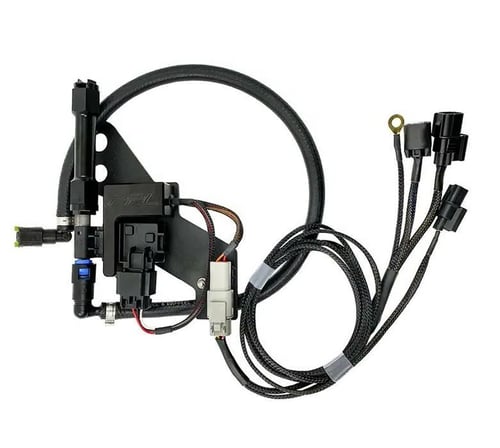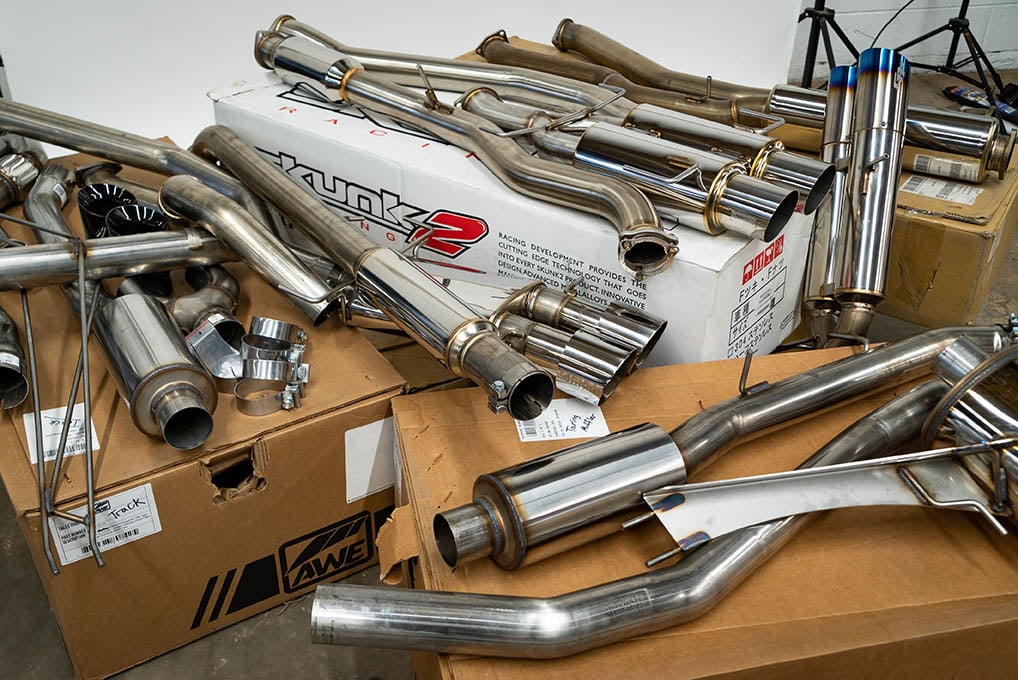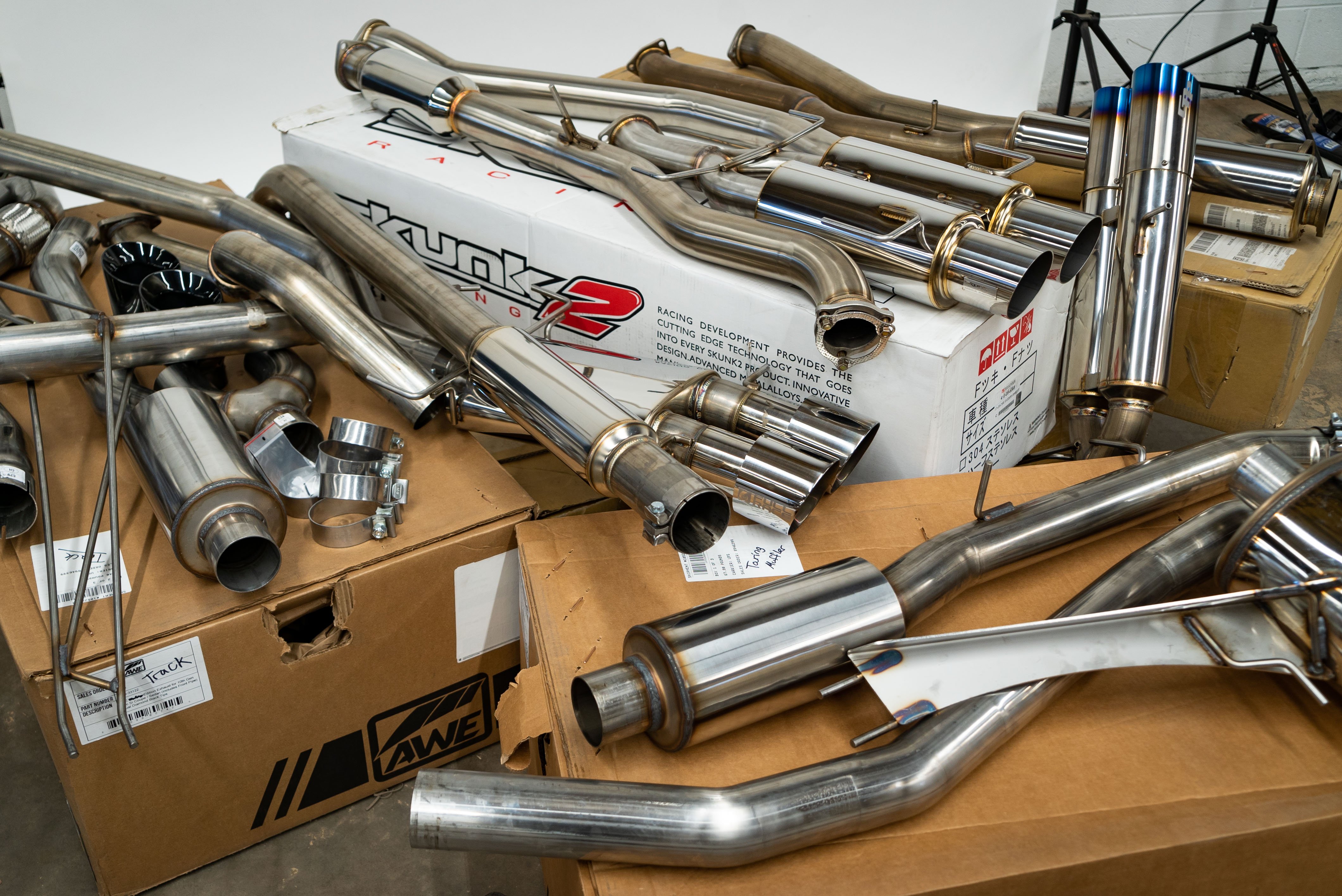
250whp isn't a ton, after all. But when the car is light, has a turbo that actually gives you torque, and is coming from a fuel sipping 1.5 liters, it makes for a really nice way to enjoy the newer Civic with Honda's 1.5T engine. And with factory forced induction, it makes it relatively inexpensive to do.
It's hard to believe I'm writing a blog about this. If you're not quite up to speed on the newer Civics, you might be thinking, why is this a big deal? A bunch of turbo cars are basically coming with power close to this right now. But in 2016, when Honda released it's first ever factory turbo Civic, it wasn't simply to produce a performance engine, like what you can easily achieve when suddenly putting on a turbo. Yes, the turbo made it punchier than before. But it still only has 1.5 liters and the turbo isn't huge. The target was clearly fuel economy without sacrificing too much power for Honda. I think they struck a good compromise.
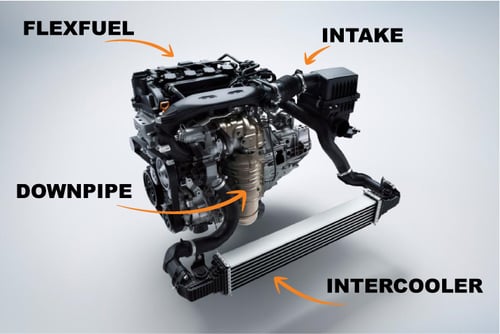
No, the L15 is not a K-Series. Nobody seems to be delusional about that. But realistically, what is the ratio of people that modify a Civic or anything with a K-Series to the point where it's making 400whp+? Yes, there are a lot, but there are a heck of a lot more that don't. With that said, the L15 becomes a seriously awesome platform for that same type of person to modify. You are going to get a much better response from your modifications than if you had a K-Series. You only need a tuning device like the KTuner V1.2 or V2 or Hondata FlashPro and a handful of parts and you're making 250whp. Even more importantly, you're making even more torque than horsepower! That's not something you will ever be able to say about a naturally aspirated K-Series. Combined with the fact that all the 1.5T Civics are weighing in under 3,000 lbs these days, at 250whp and even more torque, it becomes a certified fun haver.
Here's how you can achieve 250whp in your 10th and 11th Gen Honda Civic. It can all be done with bolt-on parts, basic tools, and a custom tune. It doesn't get a ton easier to gain over 50whp than this. If you're piecing it together, this list is in the order I would do it in. You don't have to follow it to a T, but I would at least start with the tuning device. Keep reading.
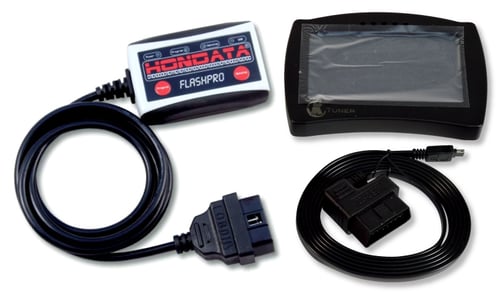
1. Tuning Device
We start here for a couple reasons. One, you can instantly gain power by plugging something in. There's not much to argue with here. These days, tuning is very reliable. You're not "tricking" the ECU anymore with a piggyback controller. There is no auxiliary device interfering with what the ECU is doing. You're actually reprogramming the ECU to do what you want. All the safety compensations and features are still active and a mildly more aggressive tune is an easy choice. Two, you can customize your tune at any time and it opens up the door to make the best use of the modifications you'll do next.
Because of how modern day fuel injection systems work, it's not advised to put on multiple parts before you tune. An exhaust by itself or a quality stock replacement intake is totally fine to add without tuning. A poor quality intake isn't good in general, but also might not run right without being tuned based on how the MAF sensor is reading after the change. So even intakes aren't as simple of a bolt-on anymore. But we're going for full bolt-ons here and if you know you are too, just start with the tuning device. Also, if you know you're going to get a bigger MAF housing for your intake choice, then you MUST start with a tuner. You don't have a choice.
Hondata and KTuner are your options here. We've used both of them and they are comparable and easy to use.


2. Intercooler
The intercooler is next because almost all OEM intercoolers just seem to perform so damn bad. With just about every platform we've messed with, they just never give you a great intercooler. For making power, the intercooler is going to cool down the air, making it denser and sending a larger mass of air to the cylinder. For reliability, the cooler air also helps prevent detonation and unsafe cylinder conditions that contribute to faster wear and potentially dangerous cylinder conditions when trying to push the engine.
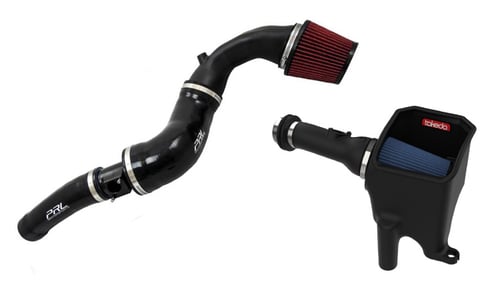
3. Intake
Aside from almost being a clichè, an intake is actually useful. There are 2 reasons to get a better intake. The first is obvious, more power. Reducing restriction allows your turbo to pull from a denser air charge after recovering some of the pressure loss in the intake system. The turbo sucks air in at a rate faster than what the filtering system can flow. Reduce the bottleneck and increase the power. Secondly, for when you go past the MAF limit of the car. This won't happen at 250whp, but if you know you're in danger of putting a bigger turbo on one day, it's wise to just go with an intake with a bigger MAF housing as you will eventually reach the limit of what the stock MAF can read with the factory diameter housing. They're not that much different in cost so you're not losing out on much if you get the bigger MAF housing. But you must tune the ECU if you're using a MAF housing larger than stock.
-web.jpg?width=400&height=267&name=RV6_CattedDP_15T-(1)-web.jpg)
4. Downpipe
This is tricky because it's not as easy to mess with emissions equipment anymore. And a catalytic converter is emissions equipment. With that said, there are a handful of good flowing but still emissions friendly downpipes. High flow cats are definitely still worth the upgrade as the factory cats are extremely dense. In a turbo car, taking restriction out of the exhaust piping is crucial to making power. We offer many options including RV6 Performance, Skunk2 Racing, and Invidia.
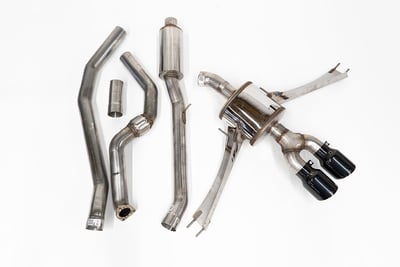
5. Exhaust
A larger exhaust most definitely makes more power. But again, in certain cars, it won't do much without tuning the car. The exhaust is a fun mod either way. It's a way to make more power and express yourself through the car at the same time. Some people like loud, some quiet. Some like a wild tip setup, some like it subtle. Fight for your right to party with the exhaust of your choice, either way, a free flowing version will help you get to your 250whp.
6. FlexFuel
FlexFuel availability to a car being modded is just such a gift. You can tune the car with ethanol fuel without a FlexFuel kit so by no means do you actually need this mod to make use of ethanol. But it sure does make it easier. It's a way to use ethanol without having to flash your alternative ethanol map in a parking lot or a gas station after you put it in the tank. We've written about ethanol tuning a lot in other articles. But if you don't know, ethanol works wonders for performance and will help you easily squeeze out more ponies to get you to your goal once your tune is setup for it.
After all is said and done, you might not reach 250whp with all this. If you don't, you'll be very close. Keep in mind the Si turbo is slightly different than the regular 1.5Ts, so that's one reason why a non-Si car won't reach it as easily. Another reason is because of the device being used to measure it. Some dynos just read different than others. Aside from each dyno's varying logic, you have things like air temperature, altitude, tire style/size, fuel quality, engine condition, and many other variables that contribute to how much actual power is hitting the ground. If you show up to a dyno and hit 246whp while searching for 250, don't be disappointed. In my opinion, you're basically there. The last few horsepower that you can squeeze out of a car usually aren't worth it. The engine has to reach hard to get there and it's usually too close to the edge of damage. 250 is a nice round number that you can reasonably achieve or get very close to in a 10th and 11th gen Civic or other 1.5T Honda.
I'm the founder of Edge Autosport and I remember first getting into cars in high school. I read all the magazines, bought a bunch of technical books, and finally got to start wrenching around the age of 19. I really enjoy modding and being able to live out a passion is truly awesome. I wouldn't change a thing.
Topics:
